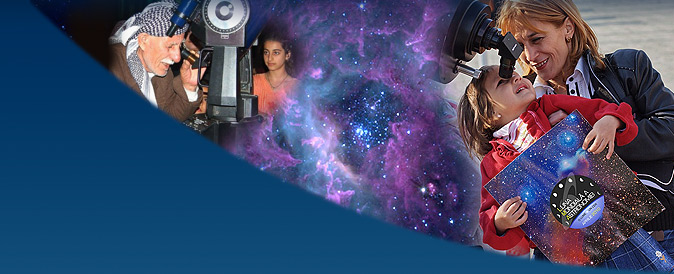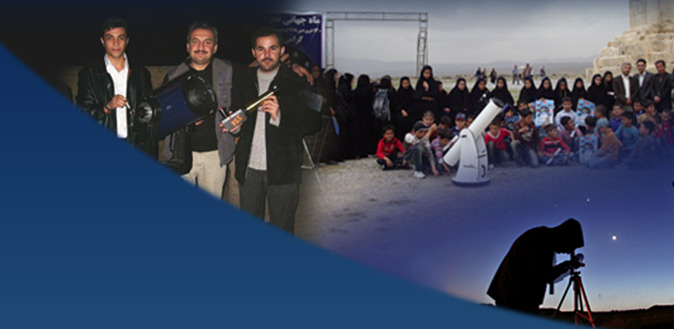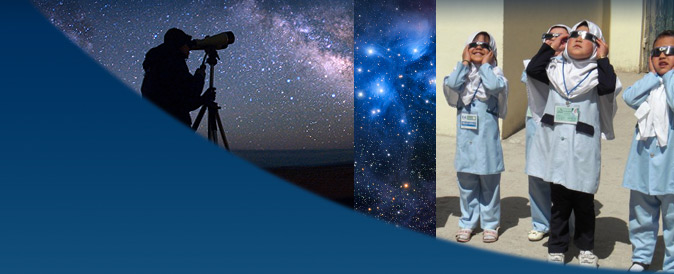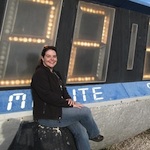GAM 2012 Blog
|
April 18 By Pamela Gay |
Back to the GAM Blog | 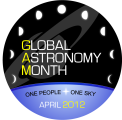 |
| One of the most amazing things about our universe is that we can understand it. |
||
The key word in that last sentence is “we”.
The importance man has placed on astronomy is built into the Pyramids of Giza, and carved into the rocks of Chaco Canyon. It is found in art and architecture, and it is found in literature and lyrics of songs. The slaves of America were guided to northern freedom through songs of the constellations, and early jazz singers captured the 1833 Leonid meteor shower in modern melodies.
Throughout history, humans have been looking up and trying to make sense of the changing skies. This search for understanding has never been limited to shaman and scientists – everyday people have always been there, struggling within the limits of their abilities, to understand the universe. Throughout the centuries, science has been punctuated by major discoveries made by unlikely people: composer, conductor, and oboist William Herschel discovered the planet Uranus in 1781 using a homemade telescope; mule cart driver and janitor Milton Humason made many of the galactic redshift determinations needed to show our universe is expanding. Over and over through history, everyday people have helped advance our understanding of our universe.
Today, everyday people continue to make meaningful contributions, and thanks to the Internet you can easily become part of it. There are many different ways you can get involved, including ranging from observational astronomy to online data analysis, and even to computer programming (but we’ll leave that for another day).
Many people don’t realize that even modest telescopes can make scientifically needed observations. Observational astronomy groups like the American Association of Variable Star (which is really international) and the Center for Backyard Astrophysics work to train and organize amateur astronomers who use their telescopes to explore the skies. Professional multi-meter class telescopes and their on-orbit brethren are powerful tools designed to probe the faintest stars and the most distant galaxies. Getting time on them is a highly competitive process, and most observers get no more than a handful of nights or orbits per year. Backyard and educational telescopes, however, are the tools of individuals who can choose to observe as many or as few objects as they want. Some of the observers behind these scopes study the same objects night after night for years. Their work can be used to study long-term changes in our inconstant skies, and to spot the sudden apparition of nova and comets. Their telescopes are the workhorses that plow through the stars, systematically harvesting a cornucopia of transitory and unusual celestial behavior. You and your telescope can become part of their teams.
Beyond observing, you can also make contributions from your laptop. Numerous online projects have arisen across multiple sciences, and they invite you to solve problems that require you to examine videos, annotate images, and sometimes even study graphs, plots, and other forms of data visualization. One new project, a partner of Global Astronomy Month, is CosmoQuest (http://cosmoquest.org). This website wants to be your portal to an online research community where users can learn and do science.
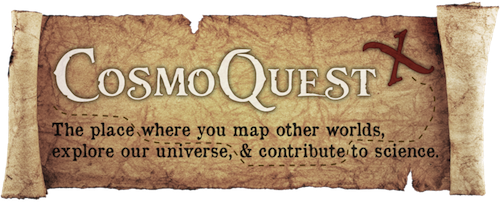
Launched in January 2012, CosmoQuest brings together citizen science projects related to a growing number of NASA missions along with online programs that range from seminars and round tables held using Google Hangouts on Air, to virtual star parties. In coming months they also plan to add classes on a variety of topics (some for free, some for fee). The goal of CosmoQuest is to create a virtual research center that allows people to successfully collaborate on projects that help advance our understanding of the universe.
CosmoQuest is a collection of professional scientists, citizen scientists, programmers and engineers who each bring unique skills to the community. Together, we are CosmoQuest.
Currently, CosmoQuest hosts projects related to finding Kuiper Belt Objects, and that allow you to help map the surfaces of the rocky worlds, including the Moon and (images still pending at the time of writing) Vesta. In coming months, Mercury will join the collection a mapping projects, and based on what you help us find, we’ll be adding advanced tasks for experienced users that engage you in progressively more complicated analysis. We will work to make sure you receive the training you need to be successful.
Our goal is to create a community of people bent on together advancing our understanding of the universe; a community of people who are participating in doing science, who can explain why what they do matters, and what questions they are helping to answer. We want to create a community, and here is where we invite all of you to be a part of what we’re doing.
Where would you like to explore tomorrow?
|
|
Dr. Pamela L. Gay is an astronomer, writer, and podcaster focused on using new media to engage people in science & technology. |

